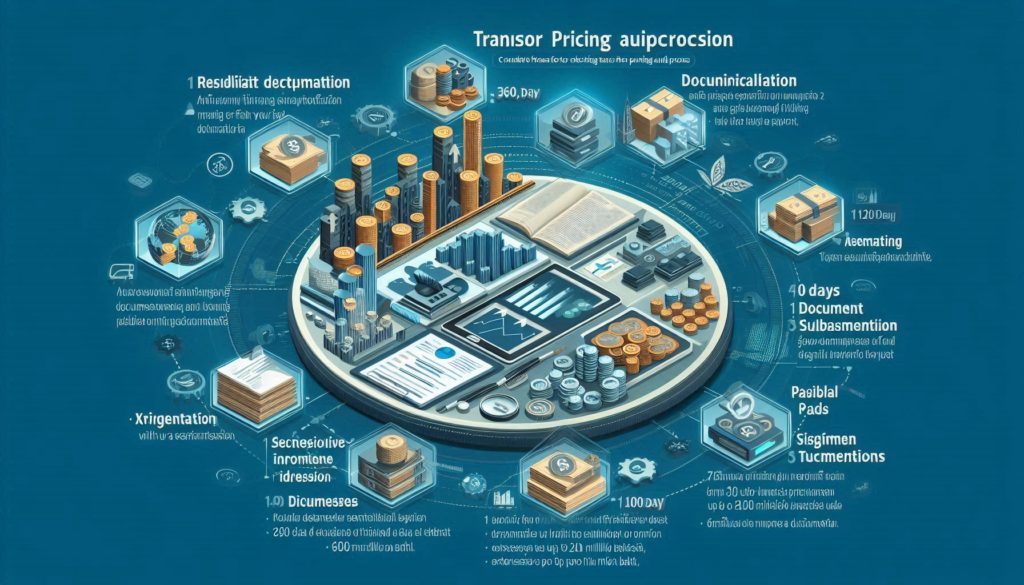Section 71 Ter, Paragraph 2 of the Revenue Code
“Within five years from the date of submitting the report on the company or juristic partnership entities related to each other under paragraph one, the authorized officer may send a notification letter to the company or juristic partnership entity under paragraph one to submit documents or evidence necessary for the analysis of transaction terms between related companies or juristic partnership entities as specified by the Director-General and the recipient of the notification letter must comply within sixty days from the date of receiving the notification, unless there are compelling reasons preventing compliance within that timeframe. The Director-General may allow an extension of the deadline, but not exceeding one hundred and twenty days from the date of receiving the notification. This applies only in cases where the recipient receives the notification for the first time. For those who receive the notification for the first time, compliance must be within one hundred and eighty days from the date of receiving the notification.”
Who shall be responsible for submitting the documents or evidence showing the aforementioned information?
Companies or juristic partnerships that are related (as prescribed in Section 71 Ter. 2 of the
Revenue Code) and engage in transactions between themselves, in proportion to the significant amount of total income of the business. The determination of prices between them may affect the business operations or profits of the business, resulting in reduced or untaxed income (income amount specified under ministerial regulations, not less than two hundred million baht as per Section 71 Ter. 3).
What are the criteria of the Revenue Department for selecting companies to submit documents for examining Transaction Pricing Audit?
Examples of risks that could lead the Revenue Department to conduct a Transfer Pricing (TP) Audit to examine Transfer Pricing:
- The company has been consistently operating at a loss for several consecutive years.
- The Inconsistent business performance, such as alternating profits and losses from year to year, with no tax payments over several years.
- The total net profit is lower than the industry average.
- The Operating at a loss after the expiration of the BOI investment promotion period.
- Changing business structure resulting in reduced net profit or losses, leading to lower or no tax payments.
- The Management fees, royalties, or payments to related companies in significantly higher amounts or increased from previous years.
- Lack of documents, evidence, or contracts specifying the terms of pricing or transactions between group companies.

When requested to submit documents, it indicates that the company is being audited by the Revenue Department for Transfer Pricing issues. What should be done in such a case?
The company must prepare documentation and evidence necessary for the analysis of transaction terms, as detailed in Revenue Department Regulation No. 113/2545, Section 4, which consists of 10 points (currently not repealed or amended). However, the challenge of preparing Transfer Pricing Documentation lies in clearly demonstrating that the pricing method used by the company is at an Arm’s Length Price, meaning it is independently set and appropriate. Therefore, the method of proof involves finding comparable transactions, which is quite detailed and complex, requiring expertise in business knowledge and accounting principles
When requested to submit documents, it indicates that the company is being audited by the Revenue Department for Transfer Pricing issues. What should be done in such a case?
The company must prepare documentation and evidence necessary for the analysis of transaction terms, as detailed in Revenue Department Regulation No. 113/2545, Section 4, which consists of 10 points (currently not repealed or amended). However, the challenge of preparing Transfer Pricing Documentation lies in clearly demonstrating that the pricing method used by the company is at an Arm’s Length Price, meaning it is independently set and appropriate. Therefore, the method of proof involves finding comparable transactions, which is quite detailed and complex, requiring expertise in business knowledge and accounting principles

Example
Assume that Company A operates with an average net profit of 1% of sales over the past 3 years. Upon analysis, it is found that there are only 5 comparable companies for benchmarking:
Company B: Average net profit over 3 years is 3% of sales.
Company C: Average net profit over 3 years is 2% of sales.
Company D: Average net profit over 3 years is 5% of sales.
Company E: Average net profit over 3 years is 6% of sales.
Company F: Average net profit over 3 years is 10% of sales.
Thus, the arm’s length range (independent company profit) is determined to be between 2% and 10% of sales. If tax authorities notify Company A to adjust its net profit to 5% of sales, Company A would have a net profit of 15,000,000 baht (5% of 300,000,000 baht). The additional net profit that Company A would need to pay tax on would be 12,000,000 baht (being 15,000,000 – 3,000,000).
Whether Company A would agree to pay the additional tax or contest it would depend on its assessment of the legitimacy of the adjustment and its willingness to avoid potential disputes with the tax authorities.
It can be seen that there may be differing opinions and disagreements between the company and the tax authorities during a Transfer Pricing Audit, especially regarding the selection of comparable and the conclusions drawn from the audit. Therefore, resolving audit issues typically requires relying on data, analysis, and negotiating experience to discuss causes and effects effectively.








